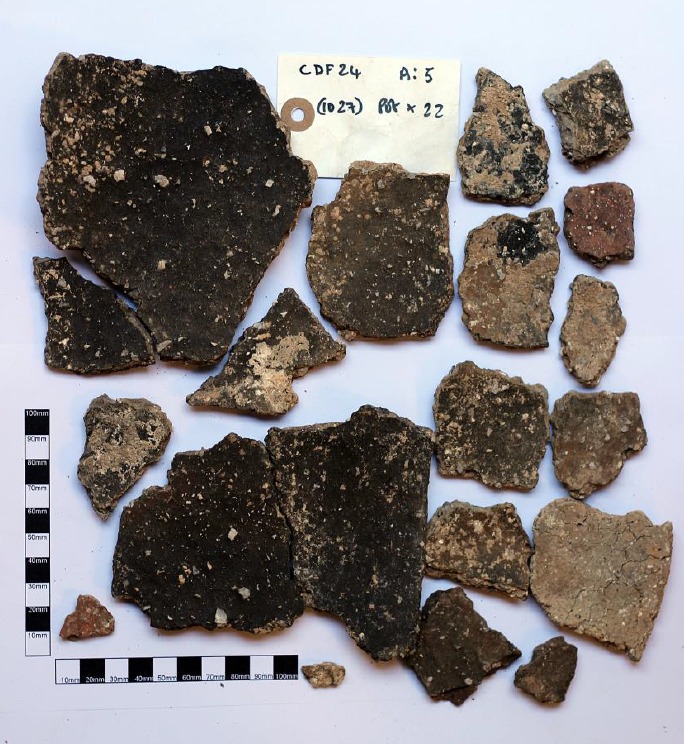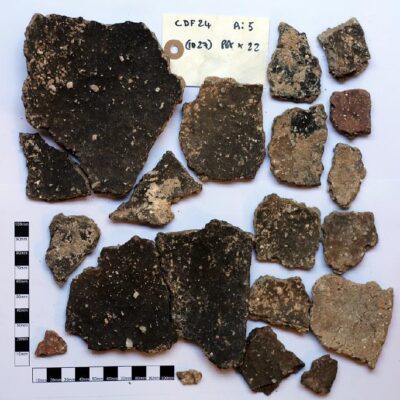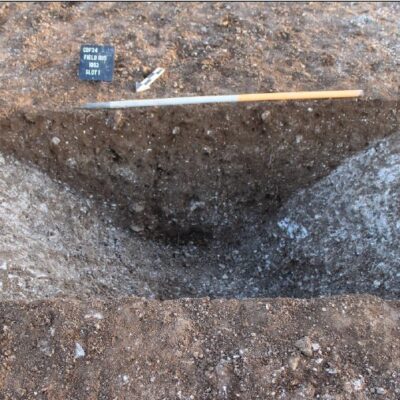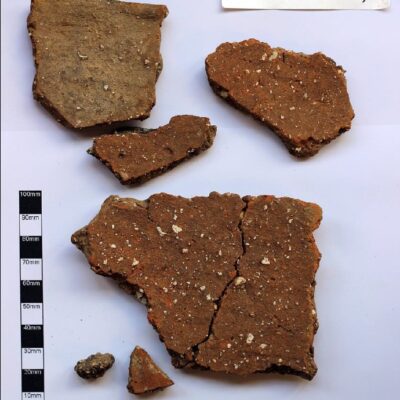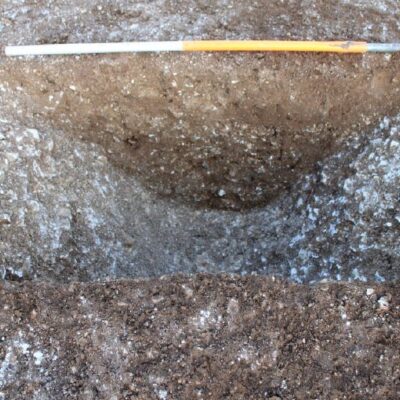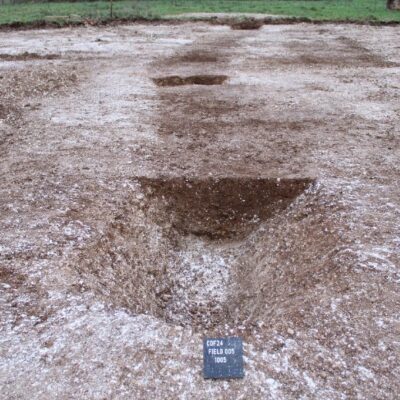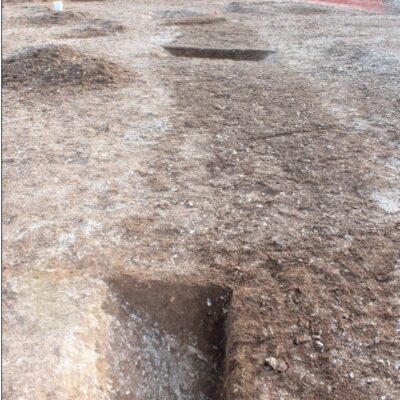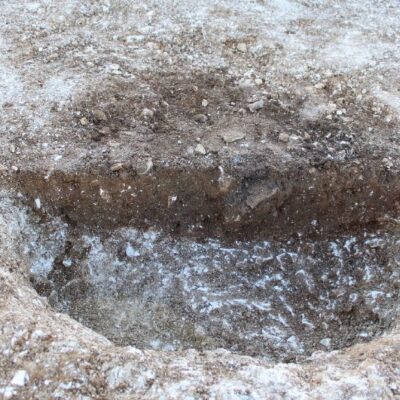Work at Charity Down Farm
Danebury is probably Hampshire’s best known archaeological site. Investigated by Professor Cunliffe over many years, it sits in a surrounding landscape of smaller settlements or farms, with field systems and paddocks, the ancestors to our present farming community. This too was investigated by Professor Cunliffe in his Danebury Environs project. In the latter part of last year, at a location distant yet still visible from Danebury, a large area of topsoil stripping to enable a reconfiguration of a farm to modern needs, was monitored by Border Archaeology. Their report has recently arrived in our office.
Although no direct evidence of settlement was found two ditches of substantive scale, although only surviving in short sections, may reflect the layout of a field or a paddock, or define an area where other activity was taking place. Four large pits were also found. The recovery of Iron Age pottery tells us that this is activity taking place in the Danebury environment contemporary with the hillfort. Under its view and its rampart and no doubt in the protective shade that the hillfort, its chief and warriors offered. That there was relatively little pottery, particularly in the pits, does give us an idea that this was not settlement. These were not grain pits that were back filled with the domestic rubbish of a working farm and farming community. We cannot be sure what activity was taking place, but the samples taken from the fills of both pits and ditches found evidence of iron production (slag) and iron smithing (Hammescale – small droplets of fine iron that spray off during smithing, presumably as a shower of orange sparks). Perhaps this is where a community made its iron, or made/repaired its iron tools.
The photographs are shared by the kind permission of Border Archaeology
Originally posted on Hampshire Historic Environment Team Facebook Page

